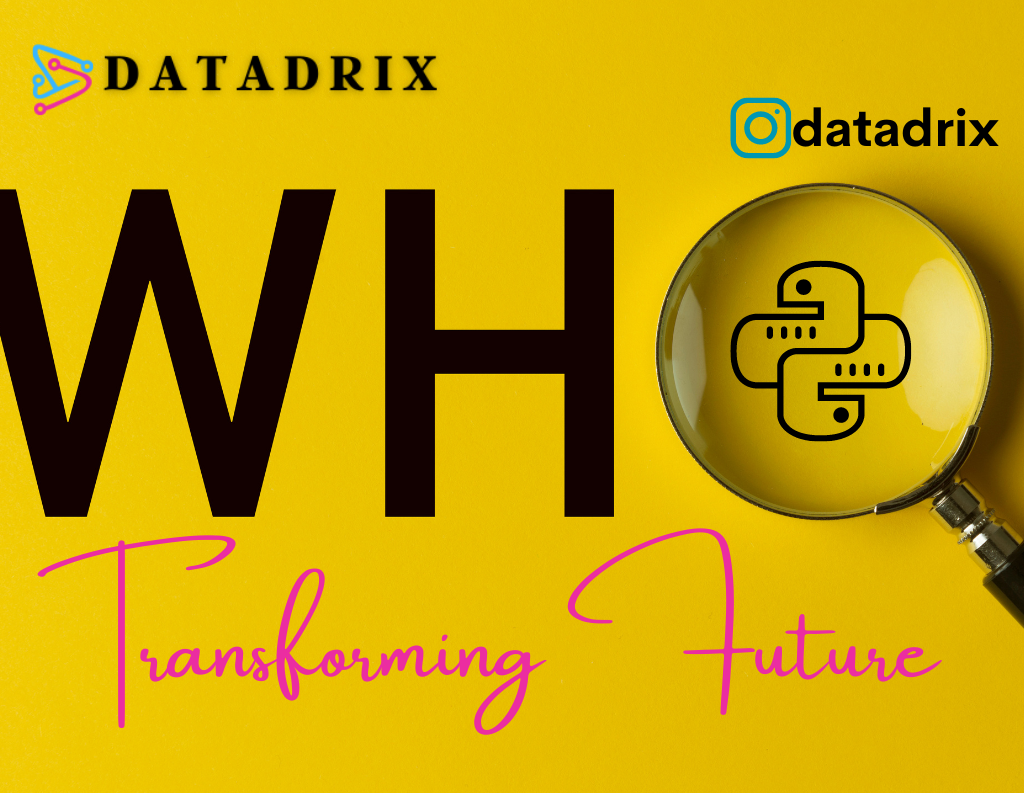
DATADRIX : RPA
Redefining Efficiency with Robotic Process Automation
Unlock the world of automation and efficiency with our Robotic Process Automation (RPA) course. RPA is revolutionizing industries by automating repetitive tasks, streamlining workflows, and reducing human error. Our comprehensive program covers the fundamentals of RPA, the use of automation tools, and the development of custom bots. Whether you’re an aspiring RPA developer or a professional looking to enhance your automation skills, our course provides hands-on training, real-world scenarios, and guidance from industry experts. You’ll be equipped to implement automation solutions in various domains, optimizing processes & driving productivity. Join us to embark on a journey into the exciting realm of RPA.
RPA
Harness the Power of Automation
At [Institute Name], we are excited to offer an exceptional Robotic Process Automation (RPA) training program. RPA is a transformative technology that enables organizations to automate repetitive, rule-based tasks, freeing up valuable human resources to focus on more creative and strategic endeavors. Our RPA training is designed to equip students with the knowledge and skills needed to excel in this dynamic field. Whether you’re a recent graduate looking to embark on a rewarding career, a professional seeking to upskill and remain competitive, or an organization interested in harnessing the power of RPA, our program is tailored to meet your unique needs.
Our RPA training program covers a wide spectrum of topics, ensuring that you graduate with a robust understanding of RPA technologies. You will dive into essential concepts, including process automation, bot development, and integration with various applications and systems. Through hands-on projects and real-world case studies, you’ll gain practical experience in designing, building, and deploying automation solutions. Additionally, our expert instructors will guide you through best practices, industry trends, and the latest RPA tools, preparing you to take on the challenges of the modern workforce.
Upon successful completion of our RPA training, you’ll be well-positioned for a wide range of exciting career opportunities. RPA professionals are in high demand across industries, making this a promising career choice. Whether you aim to become an RPA developer, business analyst, or consultant, our program will provide you with the skills and confidence to thrive in the field. We are committed to your long-term success, offering job placement assistance and continued support as you embark on your RPA journey. Join us at [Institute Name] and step into the future of automation and innovation. Your RPA career begins here.
In-Demand Skill: Whether you’re a recent graduate entering the job market or a professional aiming to enhance your skill set, our RPA course equips you with the expertise to meet the demands of the modern workforce.
Beginner-Friendly: We provide a supportive environment where beginners can comfortably explore the world of RPA. Our course starts with the basics and gradually builds a strong foundation, introducing concepts and tools step by step.
Versatility: Our RPA (Robotic Process Automation) course offers versatility by teaching students how to create software robots that can automate a wide range of tasks, making it applicable across industries.
Structured Learning: This structured approach enhances understanding and allows for a step-by-step development of expertise in RPA, making it accessible to learners of all levels, from beginners to experienced professionals.
Hands-On Practice: You’ll have the opportunity to work directly with RPA tools and platforms, creating and deploying automation solutions, and solving real-world business problems.
Customized Learning Paths: Whether you’re a beginner looking to grasp the basics or an experienced professional aiming to enhance your automation skills, our tailored learning paths ensure that you receive the most relevant training and guidance.
Experienced Instructors: RPA is a technology that streamlines business processes by automating repetitive tasks, reducing errors, and increasing efficiency. With the guidance of our seasoned instructors, you’ll delve into the world of automation, learning how to develop custom bots, optimize workflows, and implement automation solutions.
Career Advancement: This knowledge is highly sought after in today’s job market, as organizations are increasingly adopting RPA to enhance efficiency and reduce operational costs.
Job Placement Support: Our goal is to connect you with prospective employers, offer interview preparation, and support your job search, ensuring you have the best possible chance of securing a rewarding position in the dynamic world of RPA.
Community and Networking: This supportive community extends beyond the classroom, providing a platform for sharing insights, discussing challenges, and accessing job opportunities. Your journey in RPA will not only be educational but also a chance to build lasting connections within the RPA ecosystem.
Certification: Whether you’re aiming to kickstart a career in automation or enhance your professional skill set, an RPA certification course opens doors to a wide range of exciting opportunities in today’s data-driven world.
Continuous Learning: It provides a platform for individuals and organizations to build on their existing knowledge and skills, ensuring they stay relevant and competitive in the ever-evolving field of automation.
Ongoing Support: Even after completing the training, you’ll have access to resources and support, ensuring you stay up-to-date with the latest developments in RPA.
Embarking on a RPA training journey at DATADRIX is an investment in your future, whether you’re just starting your career or looking to further develop your skills. We welcome both fresher and experienced students to join us and explore the exciting world of IT Technologies.

Course Syllabus :
A syllabus is a meticulously crafted document that serves as a comprehensive roadmap for the training program. It plays a pivotal role in guiding candidate along their learning journey, offering a structured framework for acquiring knowledge and honing skills.
A well-designed syllabus offers a bird’s-eye view of the course’s content, complete with a meticulous breakdown of modules or units, well-crafted lesson plans, and a timeline for completion. It doesn’t merely outline what candidate will learn but also lays out the precise learning outcomes and objectives that they’re expected to master by the course’s conclusion.
Embedded within the syllabus are detailed descriptions of each topic, accompanied by a treasure trove of learning resources, suggested readings, and insights into the methods by which knowledge will be assessed. It’s not just a map, it’s a compass guiding candidate through a labyrinth of assignments, projects, exams, and a transparent grading system, making their educational journey as informed and rewarding as possible.
An Awesome Community
Our students, instructors and mentors come from different colleges, companies, and walks of life.
Meet our team and students

Joining DATADRIX means you’ll create an amazing network, make new connections,
and leverage diverse opportunities.

“Validate Your Expertise and Propel Your Career”
- Certification: A testament to your skills and knowledge, certifications demonstrate your proficiency in specific areas of expertise, giving you a competitive edge in the job market.
- Expand Opportunities: Certifications to unlock new career opportunities, gain credibility with employers, and open doors to higher-level positions.
- Continuous Growth: Certifications not only validate your current skills but also encourage continuous learning and professional development, allowing you to stay updated with the latest industry trends and advancements.
Frequently Asked Questions

Who can make career transition into Python
Add context to your column. Help visitors understand the value they can get from your products and services.

What tools will going to cover
Add context to your column. Help visitors understand the value they can get from your products and services.

What is the scope of machine Python
Add context to your column. Help visitors understand the value they can get from your products and services.

Duration and scope of python language
Add context to your column. Help visitors understand the value they can get from your products and services.
